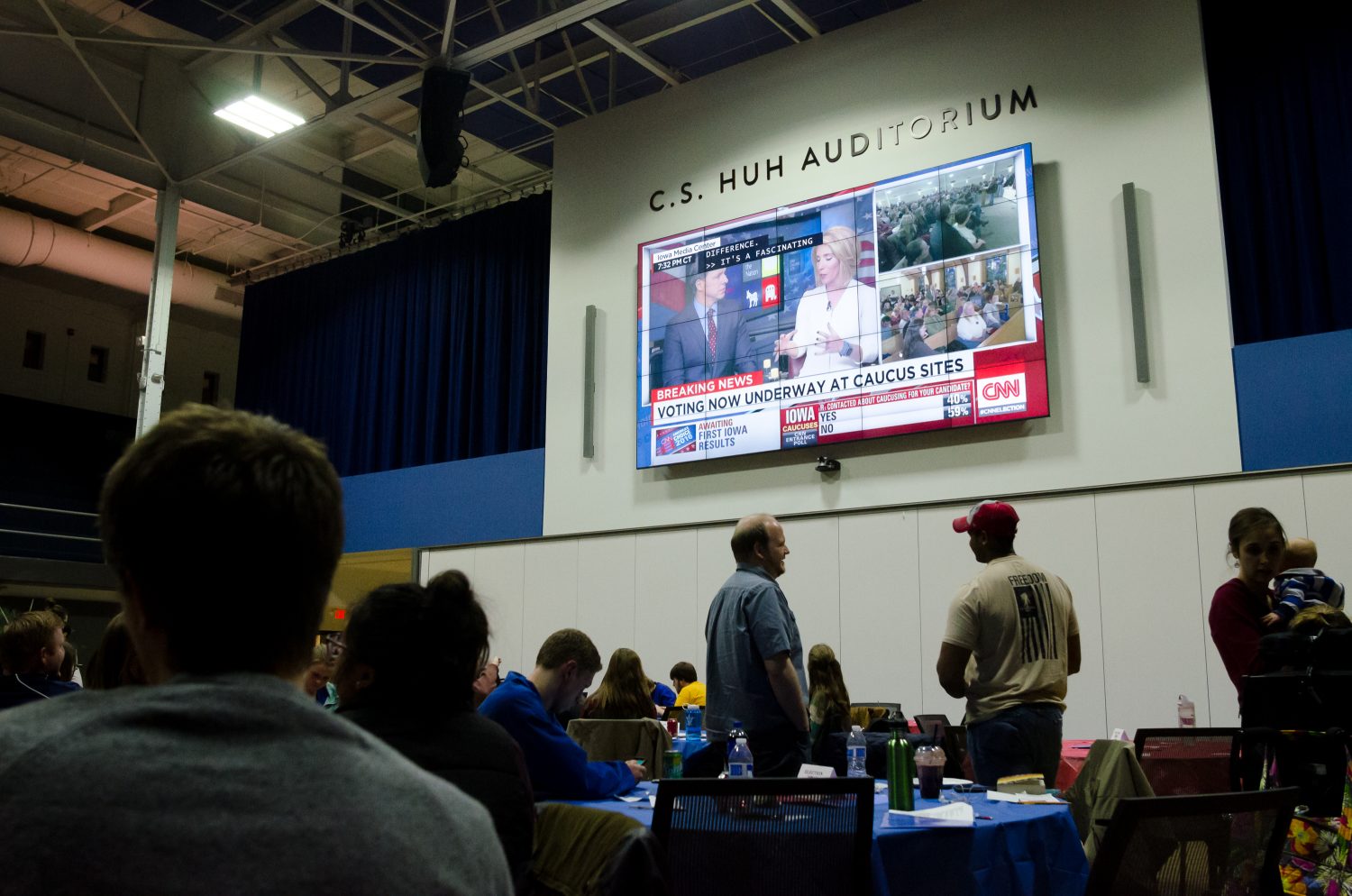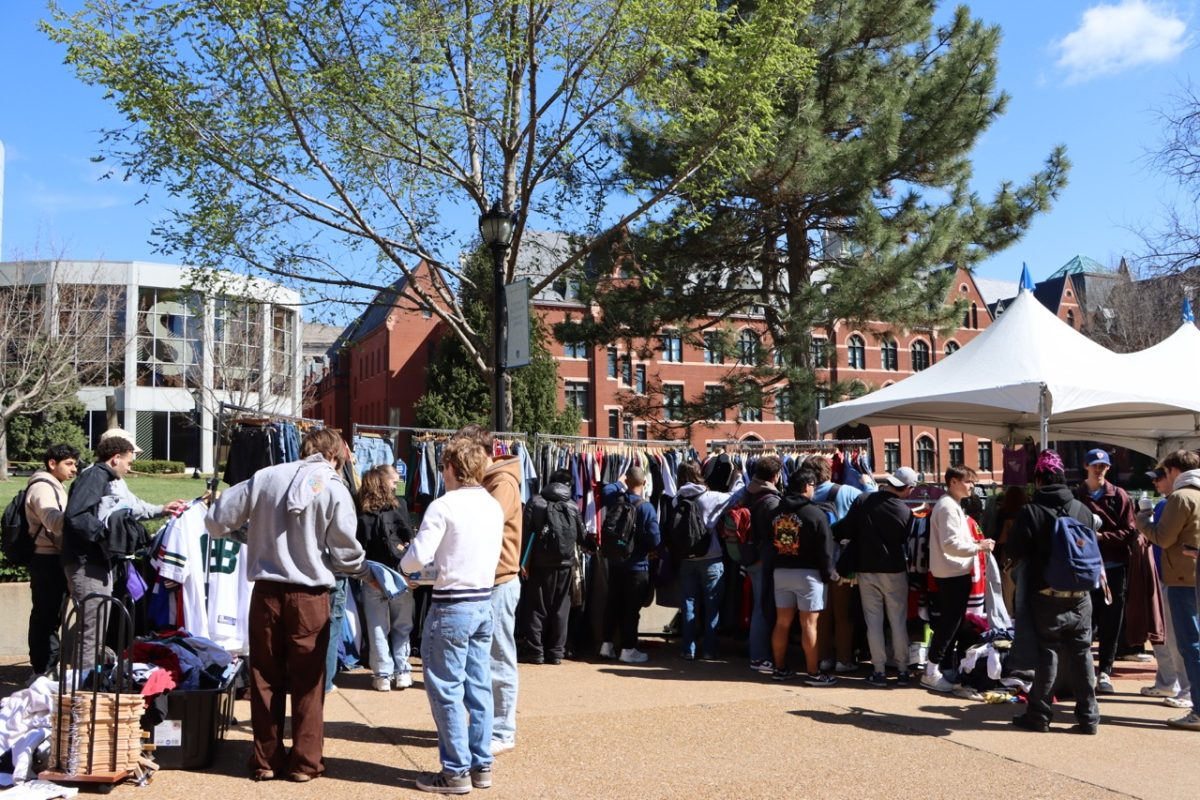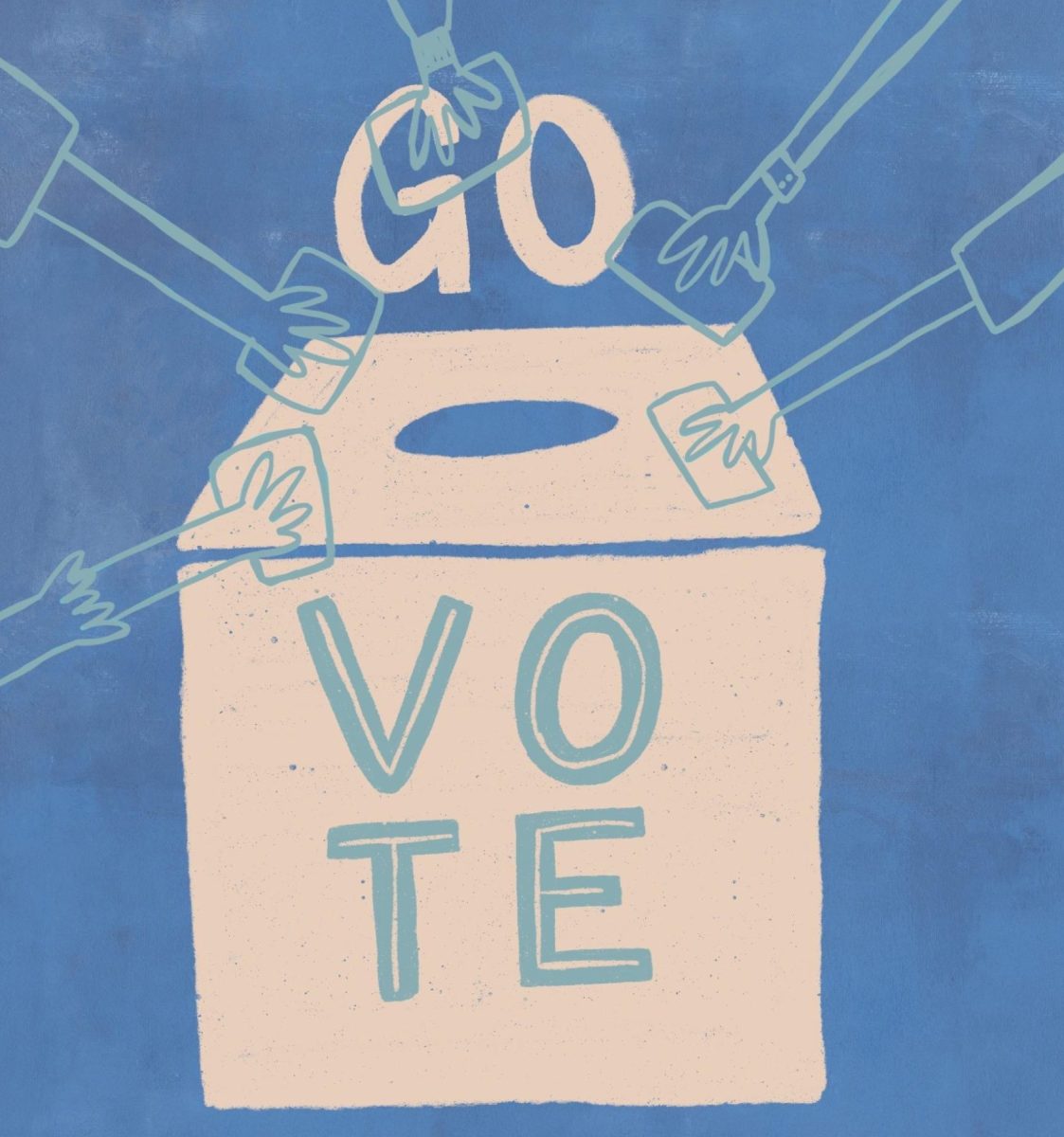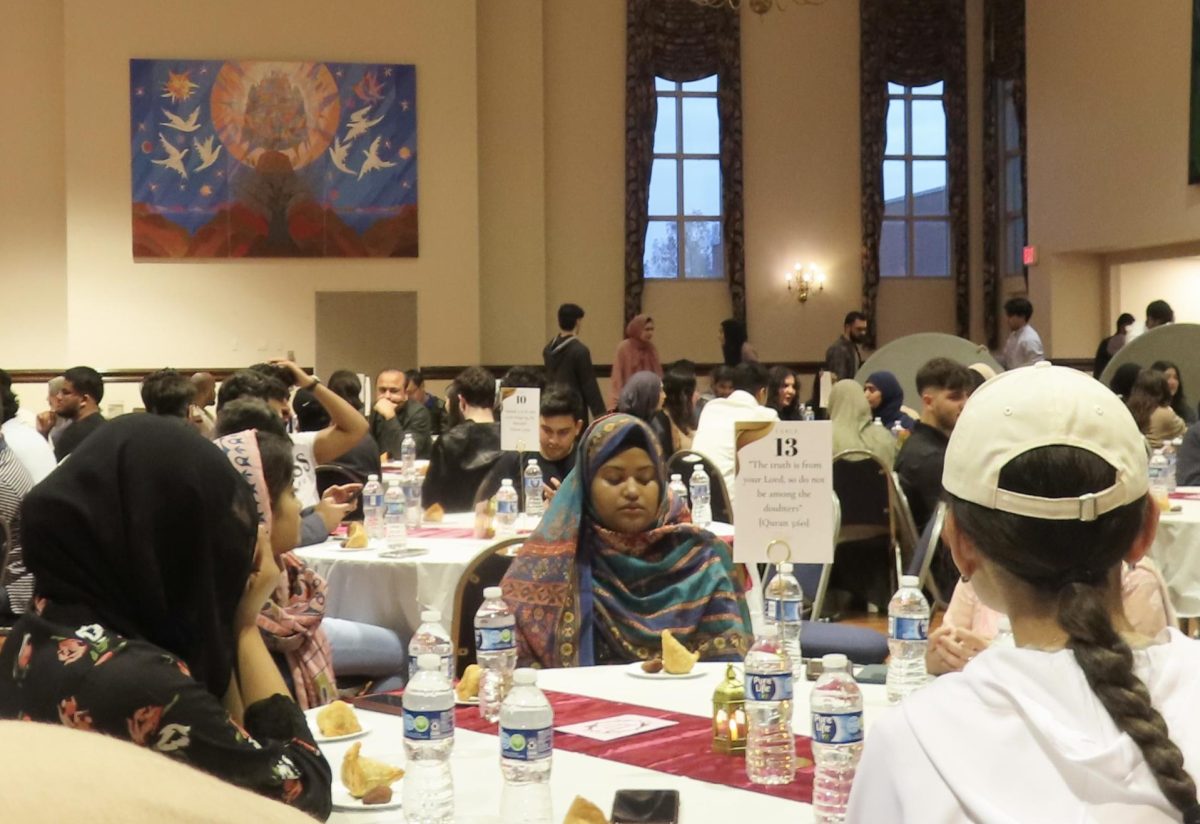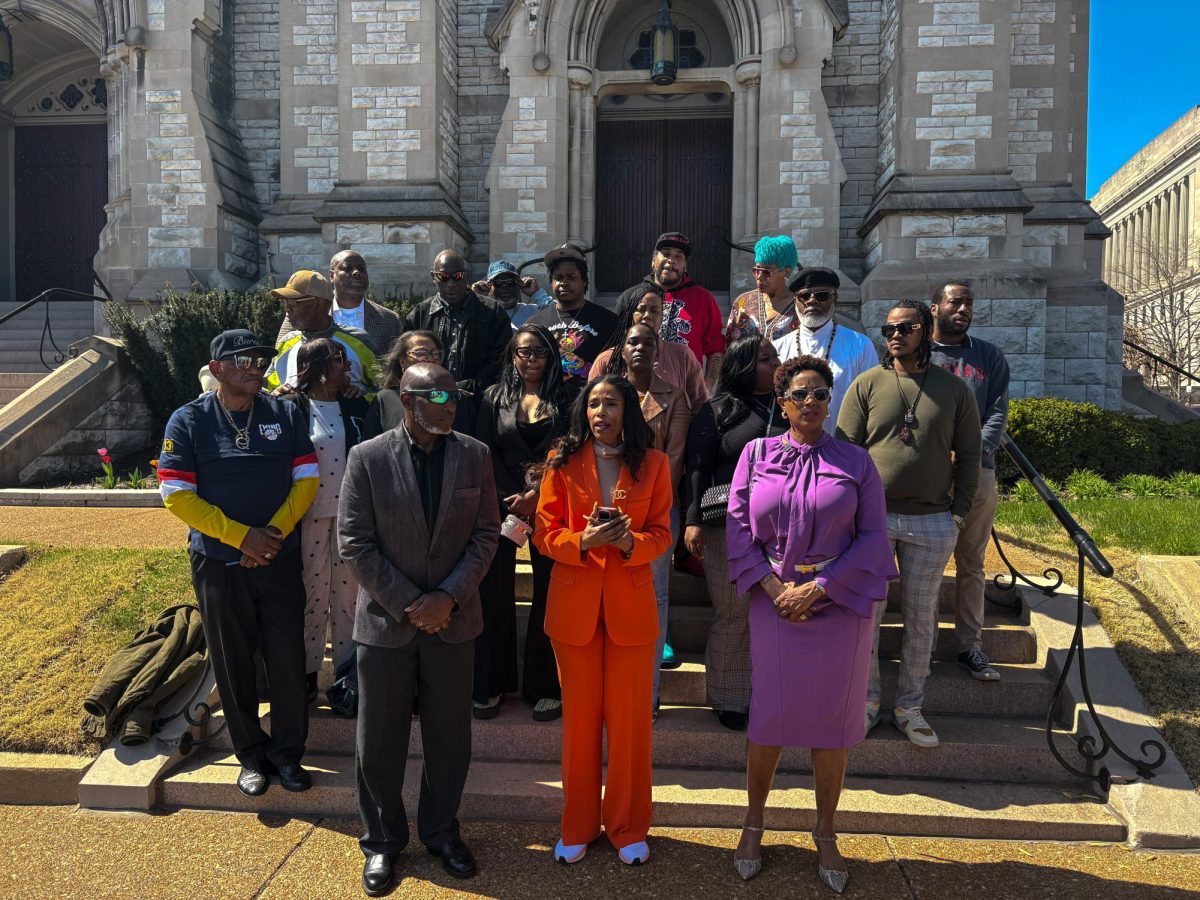Analysis, voter registration also encouraged
On the night of Monday, Feb. 1, more than 200 members of the SLU community gathered in the Center for Global Citizenship to watch Ted Cruz and Hillary Clinton claim victory in the highly anticipated Iowa Caucuses. Iowan voter turnout set records, and there was a point in the night at SLU’s watch party when every seat was filled.
Thanks to the Political Science Department and the help of Political Round Table, College Democrats, Student Involvement Center and others, associate political science professor Steven Rogers was able to create a successful event, allowing the SLU community to become more politically informed.
Erin Murphy, a member of SLU’s Political Round Table, a student organization which hosts events to encourage political discourse on an array of current event topics, commented, “As young adults, we have the responsibility of ensuring that we play an active role in securing a bright future for our country. Playing an active role in our future means taking the time to educate ourselves on the issues in order to form intelligent opinions about them.”
“I think the sheer amount of students in attendance at last night’s watch party speaks volumes to the SLU community’s interest in being politically aware.”
Saint Louis University frequently encourages its students to dialogue about the issues that affect the world around them. Murphy elaborated that Political Round Table and watch party events, like Monday’s, are “great space[s] to come and have an intelligent discussion about the things that matter.”
Other SLU organizations that had tables set up in the auditorium of the CGC included Una, Rainbow Alliance and College Democrats.
Volunteers from HeadCount, a national, nonpartisan, nonprofit organization with the motto “Music, Democracy, Action,” helped people register to vote throughout the night. By the end of the evening, HeadCount volunteers reported a total of 36 new registrations.
Not everyone happens to be a buff on the confusing electoral processes of our country, so thankfully, Rogers, who organized the event, began the night with a quick overview of the caucusing process.
The Republican Party and Democratic Party have different rules to caucusing. Republicans have a secret ballot, while Democrats gather into visible groups according to candidate, and then cast their votes.
The most unique element to the Democratic caucusing process is the “viability threshold,” or the ability for voters to switch groups when they realize their candidate is far behind, throwing their weight to back one of the more “popular” candidates.
Additionally, Rogers highlighted the various reasons behind candidates’ success in the nomination process, including social desirability bias of voters and the influence of endorsements from the establishment.
On Monday, the influence of Hillary Clinton’s 198 official endorsements turned out to be in her favor, while the opposite was true for Jeb Bush, the Republican nominee with the most official campaign endorsements.
On the Republican front, Ted Cruz began the night with a slight lead in the entrance polls over the other candidates, foreshadowing his eventual win. Early on, it was clear that after these first months of campaigning, Ted Cruz, Donald Trump and Marco Rubio would be in the 2016 race for the long haul. About halfway through the night, candidate Mike Huckabee suspended his campaign, with Rick Santorum and Rand Paul followed suit two days later.
Much of the televised coverage of the night focused on where the Iowan evangelicals’ vote would end up, which are now attributed as the key to the Cruz campaign’s win.
On the Democratic front, Bernie Sanders and Hillary Clinton were neck and neck the entire night, separated by only 0.2 percentage points of the votes for some intervals of time. Around 9 p.m. CDT, it was announced that Martin O’Malley was suspending his campaign, so the question to whom his voters would switch, deemed the “O’Malley Factor,” hung in the air. Sanders called the results a “virtual tie” in his victory speech, but American voters’ patience was tested when official results, deeming Clinton the formal winner, were not declared until the afternoon of Tuesday, Feb. 2.
The results of SLU’s watch party predictions of who would be the winner in Iowa were only slightly off target from the true results. Republicans Trump and Cruz tied, while attendees prediction for the Democrat’s results mirrored the true results with a win for Clinton, although by a wider margin over Sanders.
During the Iowa caucuses, the suspense of finding out the results of the first votes cast of the 2016 election cycle emanated across the country. Citizens of Iowa indulged in their right to vote, while the other 49 states looked on at the enthralling process of scraps of paper being sorted into baskets on live television.
Upcoming campus events on the road to the 2016 Presidential Election include watch parties for the New Hampshire primaries on Tuesday, Feb. 9 and Super Tuesday, on March 10 – the day of fifteen major primary elections and caucuses across the nation. To learn more about these events and RSVP, visit SLUElection2016.com.




